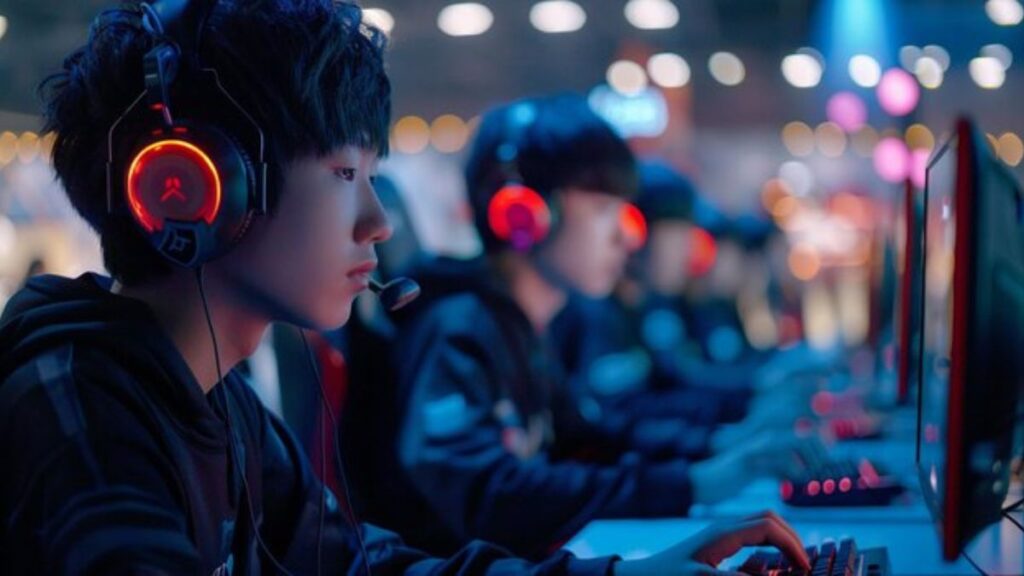When you think of gaming hotspots around the world, South Korean Gaming Spot Crossword undoubtedly comes to mind. This vibrant country has transformed its gaming culture into a phenomenon that captivates millions. From the buzzing arcades filled with retro machines to high-energy esports stadiums that draw massive crowds, South Korean gaming culture is nothing short of extraordinary. But what fuels this passion? How did these electric environments evolve over time? As we explore the rich tapestry of South Korean gaming, we’ll uncover how it became a cultural cornerstone and an industry powerhouse on the global stage. Get ready to dive deep into a world where pixels reign supreme and competition knows no bounds!
The rise of arcades in South Korea
In the late 20th century, arcades became cultural hubs in South Korea. They transformed urban landscapes into vibrant social spaces for gamers of all ages.
Bright neon lights and buzzing machines drew crowds. Friends gathered to compete in everything from classic titles to the latest releases. The atmosphere was electric, filled with laughter and friendly banter.
These arcades offered more than just games; they provided a sense of community. People connected over shared experiences, bonding through victories and defeats alike.
As technology evolved, so did these venues. Many adapted by incorporating advanced gaming consoles and virtual reality stations. This evolution kept them relevant amidst changing preferences.
Today’s arcades serve as nostalgic reminders of a golden age while still attracting new generations eager to experience that original thrill. Their legacy continues as they influence the next wave of gaming entertainment across South Korea.
Evolution of gaming in South Korea: from PC bangs to esports stadiums
The evolution of gaming in South Korea has been nothing short of remarkable. It all started with PC bangs, vibrant internet cafes that became the heart of gaming culture in the late 1990s. Here, friends gathered to play iconic titles like StarCraft and Counter-Strike.
As technology advanced, so did the platforms for gaming. The shift from traditional arcades to high-tech PCs paved the way for a new generation of players. These venues offered not just games but also social hubs where gamers could connect and compete.
Fast forward a few years, and esports began to emerge as a powerhouse industry. Massive stadiums filled with fans showcased live tournaments, making heroes out of local players. Spectators now cheer on their favorites in arenas that rival traditional sports venues.
This dynamic landscape reflects more than just a pastime; it’s become an essential part of South Korean culture and identity.
A look into popular Korean games and their impact on the global market
South Korea has birthed a number of iconic games that have had significant global influence. Titles like “StarCraft” and “League of Legends” are not just popular; they’ve become cultural phenomena. These games helped shape competitive gaming, inspiring millions around the world to engage in esports.
The unique blend of strategy, skill, and community involvement captured players’ attention across continents. With thriving multiplayer environments, these games set standards for gameplay mechanics and storytelling.
Moreover, Korean developers continue to innovate with titles such as “PUBG” and “Maplestory.” Their impact transcends borders by introducing fresh concepts that resonate with gamers everywhere.
As South Korean studios push boundaries in graphics and narrative depth, their creations drive trends worldwide. The ripple effect is evident: international tournaments highlight talent while streaming platforms amplify game visibility.
The role of government support in the growth of the gaming industry
The South Korean government has played a pivotal role in nurturing its gaming industry. Recognizing the potential of video games as a cultural export, it implemented policies that foster growth and innovation.
Funding initiatives have been established to support game developers. Grants and subsidies help small studios thrive amid fierce competition. This financial backing encourages creativity, leading to unique titles that shine on international platforms.
Furthermore, regulations around online gameplay ensure fair practices while promoting responsible gaming. These measures protect players while maintaining an environment conducive to business.
Additionally, the government’s focus on education is noteworthy. Programs aimed at training future talent have emerged across universities nationwide. This commitment shapes skilled professionals who will push the boundaries of what’s possible in gaming.
By creating a supportive ecosystem, South Korea stands out as a global leader in this dynamic sector, continuing to influence trends worldwide.
Challenges faced by the industry and how it continues to thrive
The South Korean Gaming Spot Crossword industry faces several challenges that could hinder its growth. One major issue is the increasing regulation surrounding gaming practices. The government has implemented strict policies to combat issues like addiction and gambling, which can stifle innovation.
Another challenge is intense global competition. With many countries investing heavily in their own gaming industries, South Korea must consistently push boundaries to stay relevant. This pressure can lead to burnout among developers and talent shortages.
Despite these hurdles, the industry continues to thrive by focusing on community engagement. Developers actively seek feedback from players, fostering a loyal fanbase eager for new experiences.
Moreover, collaboration between companies helps innovate game design and technology rapidly. By adapting quickly and embracing new trends such as virtual reality or mobile games, South Korea remains a formidable player on the world stage of gaming culture.
Conclusion: The future of South Korean gaming and its influence on the world stage
As we look to the horizon, the future of South Korean Gaming Spot Crossword appears bright and full of potential. The nation has established itself as a formidable force in the global gaming industry, leading innovation and setting trends that resonate worldwide. With its unique blend of tradition and modernity, South Korea continues to cultivate an environment where creativity flourishes.
The commitment from both gamers and developers drives this evolution. New technologies are emerging continuously, enhancing gameplay experiences like never before. From virtual reality arcades to mobile esports tournaments streamed live across continents, the landscape is changing rapidly.
Moreover, government support remains crucial in nurturing talent and providing resources for growth. Initiatives aimed at fostering skill development will ensure that South Korea retains its competitive edge in this dynamic field.
Challenges do exist—issues such as regulatory hurdles or market saturation must be addressed—but they seem surmountable given the resilience shown by industry players thus far. As long as passion fuels progress, there’s little doubt that South Korean gaming will keep captivating audiences globally.
With each new title released or tournament held, it becomes clearer: South Korean gaming isn’t just about local success; it’s shaping narratives on a larger stage. The influence it wields is undeniable—and it’s only set to grow stronger in years ahead.



